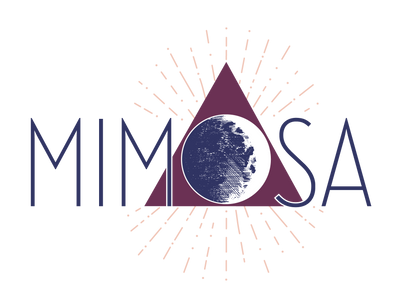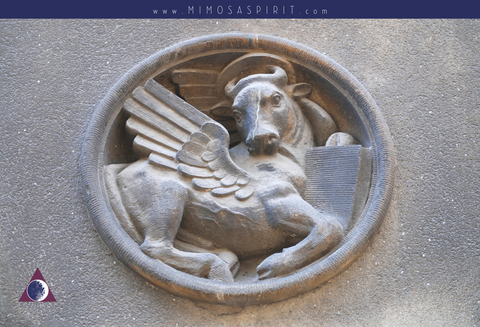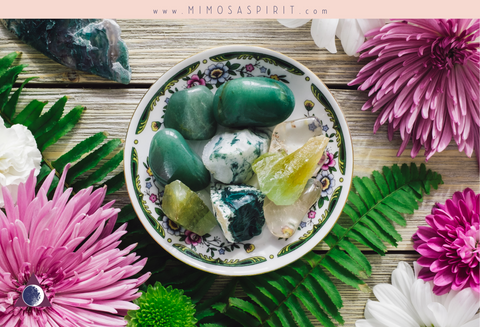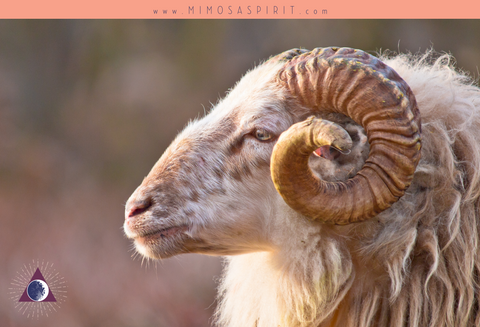
Working with Protective Symbols (The Hamsa, Evil Eye & More)
Traditional amulets of protection have been observed as a part of human culture going as far back as the Stone Age. Throughout the ages, most studied cultures have used protective symbols of one kind or another. Eyes, hands, and/or horns are often prominent features of these objects.
In our modern world, working with protective talismans and symbols can be a way of resisting and reversing "negative" energy we may feel as a result of encounters with certain people, without the need for confrontation. It's important to note here that "negative" here simply refers to any energy that's not for your highest good. You don't, of course, want to fall into the trap of blaming others for every bad thing that happens in life. But once you've taken responsibility for the things you truly can control, protective devices can help you make peace with other influences and people that are otherwise hard to understand and elusive to handle.
Sometimes we feel "bad vibes" from someone who's not doing anything overtly wrong. Even though everything may seem pleasant enough on the surface, something can feel a little "off" in certain situations. You may feel a strong need to burn cleansing herbs or a protective incense in the area, a sense of foreboding, or even notice a headache coming on after being in a draining situation or environment. Symbols of protection can help us get a handle on these situations and put a stop to negativity.
Over time, these energies can leave their mark on you and your environment. Working with protective symbols can be a way to shift the dynamic of the situation. In this article, we'll cover the history and lore of some protective symbols and objects that are still in use around the world.
Hamsa:
The hamsa is an ancient protective amulet that originated in Northern Africa. Hamsa means five in Arabic, referring to the five fingers of the human hand. The amulet is also known as the Hand of Fatima, named for the daughter of the prophet Muhammad. A folk story about the origin of this name says that Fatima was cooking soup one day when her husband came home with a new wife. She was so startled, she dropped her spoon, but continued stirring the hot soup with her bare hand without getting burned. Since God protected her hand, that hand took on the power to protect others from harm.
The hamsa is part of Jewish tradition as well, where it's also known as the Hand of Miriam. It has also been associated with Venus, and with Mary (the mother of Jesus). The symbol has always offered special protection and luck to women. It has been used by brides and those hoping to conceive and is a charm that mothers use to protect their children.
The eye part of the symbol represents the divine watching over us. This watchfulness protects us not only from external forces, but also from our own fears and self-sabotaging thoughts and actions. Some say that when the hand is shown with fingers pointing upward, it 's to ward off the evil eye, whereas when the fingers are pointing downward the hand indicates calling in luck and success. Since a mixture of religious significances are attached to the hamsa, it has recently become a symbol of what middle eastern cultures have in common, and therefore of peace, hope, and of mutual understanding, for the Middle East and for the world.
Evil Eye (Nazar):
One traditional Turkish talisman, the Nazar, has come into wide use for protection against the evil eye. This talisman, which itself looks like a wide, blue eye, can be worn or hung in a house or vehicle to protect the inhabitants. Babies are considered especially vulnerable to the evil eye, so they have traditionally been wrapped from head to foot and protected with charms in their bedding, their clothes, or even braided into their hair. Other cultures, including many Latin American ones, use similar protective charms.
Eggs:
Another Latin American tradition is to use an egg to remove the negative effects of the evil eye (mal de ojo). There, if the mal de ojo is thought to have made a person sick, a healer (curandero or curandera) may pass an egg over their body to remove the negativity and restore health. It's said that the negative energy passes from the patient into the egg. There's some resemblance between an egg and a human eye, which may be how this practice got started.
Wadjet Eye (Eye of Horus/Eye of Ra):
These ancient Egyptian symbols are said to ward off evil and offer many kinds of protection. The Egyptians painted it on boats, carved it into pharaohs' tombs, incorporated it into carvings, and wore it as a pendant, bracelet, or other piece of jewelry. The six parts of the drawing represent the six senses, as defined by the Egyptians: taste, smell, touch, sight, hearing, and thought. Offering protection by way of the senses, the wadjet helps control the ability of outside things to affect us internally.
Abhaya Mudra:
This "gesture of fearlessness" is one of the most basic mudras, the hand symbols used in Hinduism, Buddhism & Jainism. It's simple to perform: raise your right hand with the palm facing outward, at about shoulder height. It can be interpreted as one's own hand raised in a "stop" gesture, or as the hand of the Divine offering reassurance and safety.
Italian Horn:
This symbol is also called the cornetto or unicorn's horn. It's a single curved horn usually worn as a pendant. The symbol is associated with pre-Christian goddesses, which is why they're often made of either silver (representing a lunar goddess) or red coral (which is sacred to Venus). You sometimes also see them made of gold, bone, or Amber. An alternative version is a pendant made of an uncarved piece of branching coral, especially one shaped like the horn of a stag.
Algiz Rune:
Among the runes, Algiz (the elk rune) is the one that's most generally associated with protection. People of northern Europe are said to raise their hand in the shape of this rune for warding and protection. It's also associated with Heimdall, the watchman of the gods who guards the rainbow bridge between the realms of gods and men. This rune and bindrunes created from it are powerful protective symbols.
Protective Crystals:
There are of course many crystals associated with protection, including Tiger Iron, Malachite, and Obsidian. Basic protective stones like Black Tourmaline and many varieties of Jaspers are also helpful to work with. You can even create a simple protection grid around your home using Black Tourmaline and Selenite.
The Color Black:
The color black has long been associated with protection and shielding. To add a protective vibe to your space and shield it from outside energies, add a black altar cloth, some black candles, or black crystals to a room. Similarly, you can wear black clothing or wear black stones as jewelry or carry them in your pockets.
Archangel Michael:
The Archangels are central to many esoteric traditions, serving as spiritual guardians and harbingers of the four directions. Archangel Michael wields his fiery sword of protection to vanquish evil as the protector of humanity.






0 comments